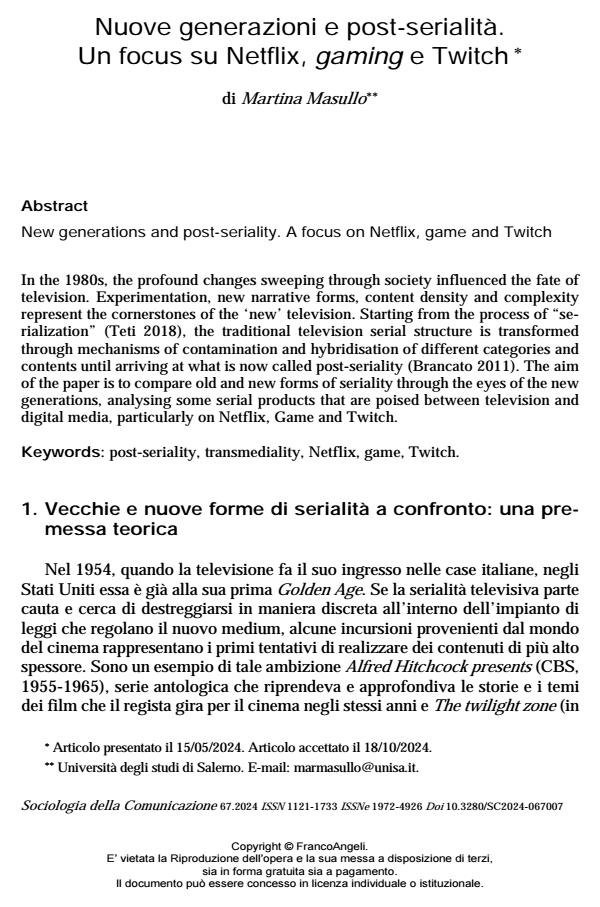New generations and post-seriality. A focus on Netflix, game and Twitch
Journal title SOCIOLOGIA DELLA COMUNICAZIONE
Author/s Martina Masullo
Publishing Year 2025 Issue 2024/67
Language Italian Pages 15 P. 108-122 File size 139 KB
DOI 10.3280/SC2024-067007
DOI is like a bar code for intellectual property: to have more infomation
click here
Below, you can see the article first page
If you want to buy this article in PDF format, you can do it, following the instructions to buy download credits

FrancoAngeli is member of Publishers International Linking Association, Inc (PILA), a not-for-profit association which run the CrossRef service enabling links to and from online scholarly content.
In the 1980s, the profound changes sweeping through society influenced the fate of television. Experimentation, new narrative forms, content density and complexity represent the cornerstones of the ‘new’ television. Starting from the process of “serialization” (Teti 2018), the traditional television serial structure is transformed through mechanisms of contamination and hybridisation of different categories and contents until arriving at what is now called post-seriality (Brancato 2011). The aim of the paper is to compare old and new forms of seriality through the eyes of the new generations, analysing some serial products that are poised between television and digital media, particularly on Netflix, Game and Twitch.
Keywords: post-seriality, transmediality, Netflix, game, Twitch.
Martina Masullo, Nuove generazioni e post-serialità. Un focus su Netflix, gaming e Twitch in "SOCIOLOGIA DELLA COMUNICAZIONE " 67/2024, pp 108-122, DOI: 10.3280/SC2024-067007